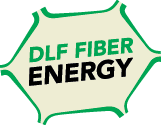REDDING
Lolium perenne
- Very early growth start in the spring
- Excellent rust resistance
- Large spring window
- Late heading


Large spring window
With about 64 days from growth start to beginning of heading, REDDING will produce quality forage over a very long period. This makes it a good option for early grazing as the main part of the 64 days comes from the early start compared to varieties heading +/- 3 days after/before REDDING. The early start shows in the high yield of 1st cut too.
Disease tolerant
REDDING has a very high rust tolerance that will preserve forage quality and palatability, especially in the summer and autumn period where this disease can be devastating.
Persistency and quality
Ryegrasses produce high quality forage for demanding animals. REDDING has good persistency and is easy to manage for conservation due to the higher dry matter content than tetraploids.
Technical Specifications
- Perennial ryegrass
Lating heading diploid perennial ryegrass with early start in spring
- Listed/recommended in EU DE DK FR
Product information

Find and compare seeds
Not sure if this the right choice for your need? Use our seed comparison tool and find your perfect variety match!
Specification and ratings
Spring window and stems in regrowth
Source : Herbe-book.org 2019Stems in regrowth: 1 = no stems
| Variety | Heading date |
Spring start (date) |
Spring window (days) |
Stems in regrowth |
| Varieties +/- 3 days |
29/5 | 7/4 | 59 | 2,5 |
| Redding | 30/5 | 4/4 | 64 | 2,4 |
Dry matter yield
Source: herbe-book.org 2019Ton dry matter per hectare
| Variety | 1st cut |
Spring yield |
Summer- autumn yield |
Total yield |
| Varieties +/- 3 days |
2,0 | 6,2 | 2,8 | 9,1 |
| Redding | 2,3 | 6,2 | 2,8 | 9,0 |
Return to overview pages
Species and varieties
We offer a wide range of healthy, quality forage grass species to optimize your milk and meat production. See all species here.
Perennial ryegrass 2n
High-yield diploid Perennial Ryegrass for temperate regions. Mixes with white clover. Varied types, diploid/tetraploid. Suitable for most soils.